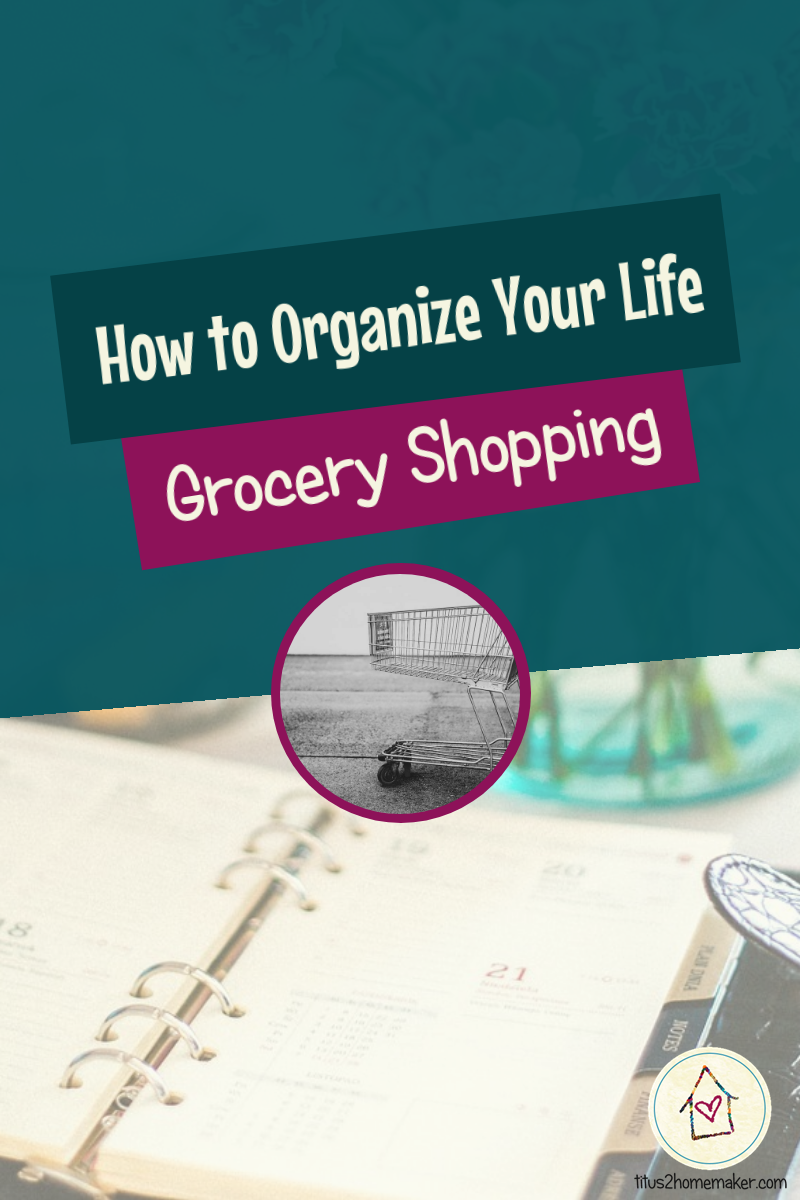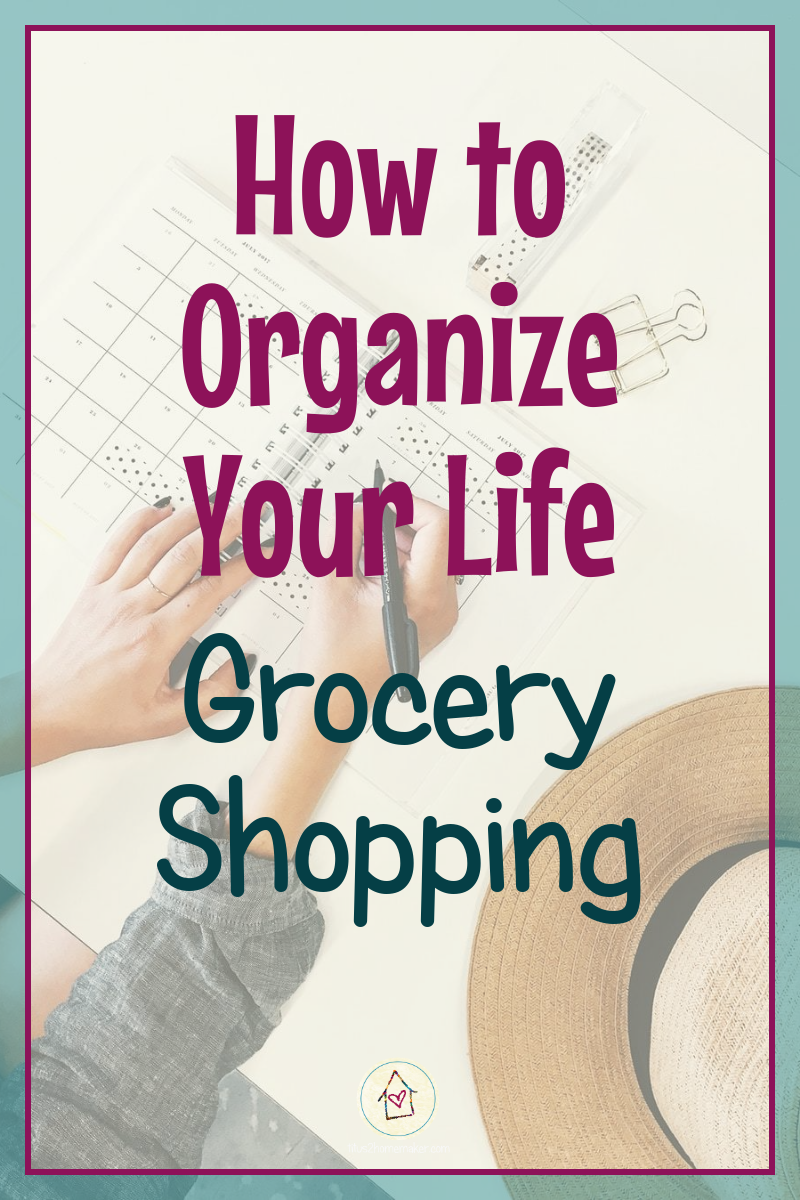
If you’re just stumbling across this, please click here for the other posts in the series.
How Do You Shop?
There are probably almost as many ways to grocery shop as there are cooks. That makes it pretty tricky to give you specific recommendations for setting up your grocery-shopping system, or for organizing the paperwork involved! There are, however, certain principles that most of us can benefit from:
- Know what you have before you make your (final) list.
- Stock up on things when they are at their lowest prices.
- Have a master grocery list for the basics you always buy. (This is optional, but I find it very helpful.)
As You’re Preparing for the Store
What do you have?
So, before you head to the store for the week or month, or however often you shop, you’ll want to inventory your pantry (and refrigerator, freezer, cupboards – wherever you store food). Many of you will want to do this before you even plan your menus, so you can cook as much as possible with what you already have on hand, and won’t need to buy as much. But even if you don’t, you will definitely want to do this before you head to the store.
This doesn’t have to be complicated or nit-picking thorough. If you want to formally create an actual, physical list you certainly can, but peeking in the food storage locations and making a mental note of what’s available is probably enough for most of us, most of the time. This quick inventory should help you avoid buying things you already have because you forgot you had them. (Or forgetting to restock the basil because you didn’t realize you’d run out. Not that I’ve done this. Recently. *cough, cough* Okay, so maybe I did this just a month or so ago. Oops.)
What’s on sale?
The second principle is stocking up on things when the prices are lowest. You can do as much or as little with this as you like. Maybe you just buy a few extra packages of toilet paper when the prices are very low. That will save you having to buy those few packages at regular prices later. You can plan your entire menu around what is on rock-bottom sale this week (and whatever you’ve stockpiled previously at rock-bottom prices). Or anywhere in-between. Anything you buy at a great sale price (that you will use) is something you won’t have to buy at full-price, so any little bit makes a difference. (Just be sure it’s something you can and will use before it goes bad.)
Obviously, you will need to take a brief look at the sale papers, or their online counterparts.
Do you use coupons?
If you use coupons, you will need a method for this, as well. If you have paper coupons, you need a place to store them, and a system for clipping, comparing, purging, and otherwise managing them. (Read more about sales and couponing.) Couponing, especially with paper coupons, is falling by the wayside, so it’s no longer likely you need a whole system for storing them, but you probably do want to make a plan for checking your digital coupons to be sure you know what’s available.
The Short List
So, when it comes down to it, there are three things I would do before going grocery shopping, besides making a list.
1. I would inventory my pantry (and refrigerator, freezer, etc.)
2. I would check to see what’s on sale.
3. I would look to see if I have any applicable coupons.
So…What to DO?
So the big question is: what do you actually do this week, to organize this part of your life, given that we all shop differently? You may need to tweak these a little, but try these steps:
STEP 1: Consider what paperwork or other “stuff” you use for grocery shopping or grocery shopping planning, and create places for these.
If you have a master list, that would be included. Do you have a pantry and/or freezer inventory worksheet you use? Do you use coupons? If you do use coupons, do you use them heavily, or just clip a few? (That will make a difference in the kind of “storage space” you need for them.)
STEP 2: Determine what your “system” is for creating your list and doing the actual shopping. Make sure you have one!
Your method, or system, or flow, or whatever you prefer to call it, may look very different from mine. It’s almost certainly at least a little different. How often you shop, how many different places you shop (and where they are relative to your home and other places you frequent), how you menu plan, etc. will all influence what your system looks like. But there should be a routine to the way you create your list and plan your shopping trip(s) and you should know what that is.
If this is a real struggle for you, you might consider actually writing it down and making a checklist to go through as you complete the process. (That might be helpful if you’re trying to teach the process to a child, too.)
STEP 3: If you need to, write it in your calendar or onto one of your routine lists, to complete this process. (i.e. “Inventory kitchen and make grocery list.”)
STEP 4 (opt.): If you haven’t already, create a master grocery list.
As I said, this is optional, but I highly recommend it. It keeps me from forgetting things that should be obvious, among other things! (Creating the list is kind of a process all of itself, but once you’ve done it, like your master main dish list, you shouldn’t have to do it again for a while unless you move or something and things radically change for you.) Click here for instructions on how you can do this.
STEP 5 (opt.): If you plan to coupon, set up (or verify that you have set up) a routine for clipping them, sorting them, “filing” them, using them(!) and purging them, as well as a place for storing them.
This will vary considerably based on how you coupon, so I won’t get into it in this post, but if couponing is an element of your grocery shopping, you will need to be sure it’s addressed.
One final, random tip: I’ve found it helpful to also keep a piece of paper that’s a “log” of how long things last. I don’t know how to stock up on shampoo if I don’t know whether a bottle lasts a month or six months! So when we open something, I will write the date on the package with a Sharpie (not every time, just when I want to see how long it lasts) so I can make note when we throw it out of how long it lasted. A list of these dates can be a helpful thing to keep with your master shopping list.
If you’re just stumbling across this, please click here for the other posts in the series.


[…] Organized 7: Recipes (part 1) Getting Organized 8: Recipes (part 2) Getting Organized 9: Menu Plans Getting Organized 10: Groceries Getting Organized 11: Food Prep Getting Organized 12: Family Info Getting Organized 13: Health […]